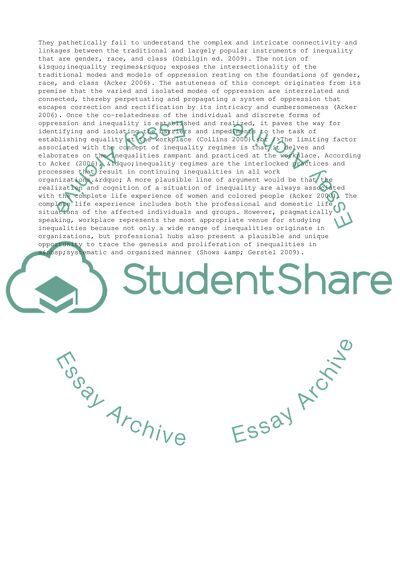Cite this document
(The Notion of Inequality Regimes at Workplace Essay, n.d.)
The Notion of Inequality Regimes at Workplace Essay. https://studentshare.org/management/1560050-critically-appraise-the-value-of-the-concept-of-inequality-regimes-for-understanding-workplace-inequalities
The Notion of Inequality Regimes at Workplace Essay. https://studentshare.org/management/1560050-critically-appraise-the-value-of-the-concept-of-inequality-regimes-for-understanding-workplace-inequalities
(The Notion of Inequality Regimes at Workplace Essay)
The Notion of Inequality Regimes at Workplace Essay. https://studentshare.org/management/1560050-critically-appraise-the-value-of-the-concept-of-inequality-regimes-for-understanding-workplace-inequalities.
The Notion of Inequality Regimes at Workplace Essay. https://studentshare.org/management/1560050-critically-appraise-the-value-of-the-concept-of-inequality-regimes-for-understanding-workplace-inequalities.
“The Notion of Inequality Regimes at Workplace Essay”. https://studentshare.org/management/1560050-critically-appraise-the-value-of-the-concept-of-inequality-regimes-for-understanding-workplace-inequalities.


